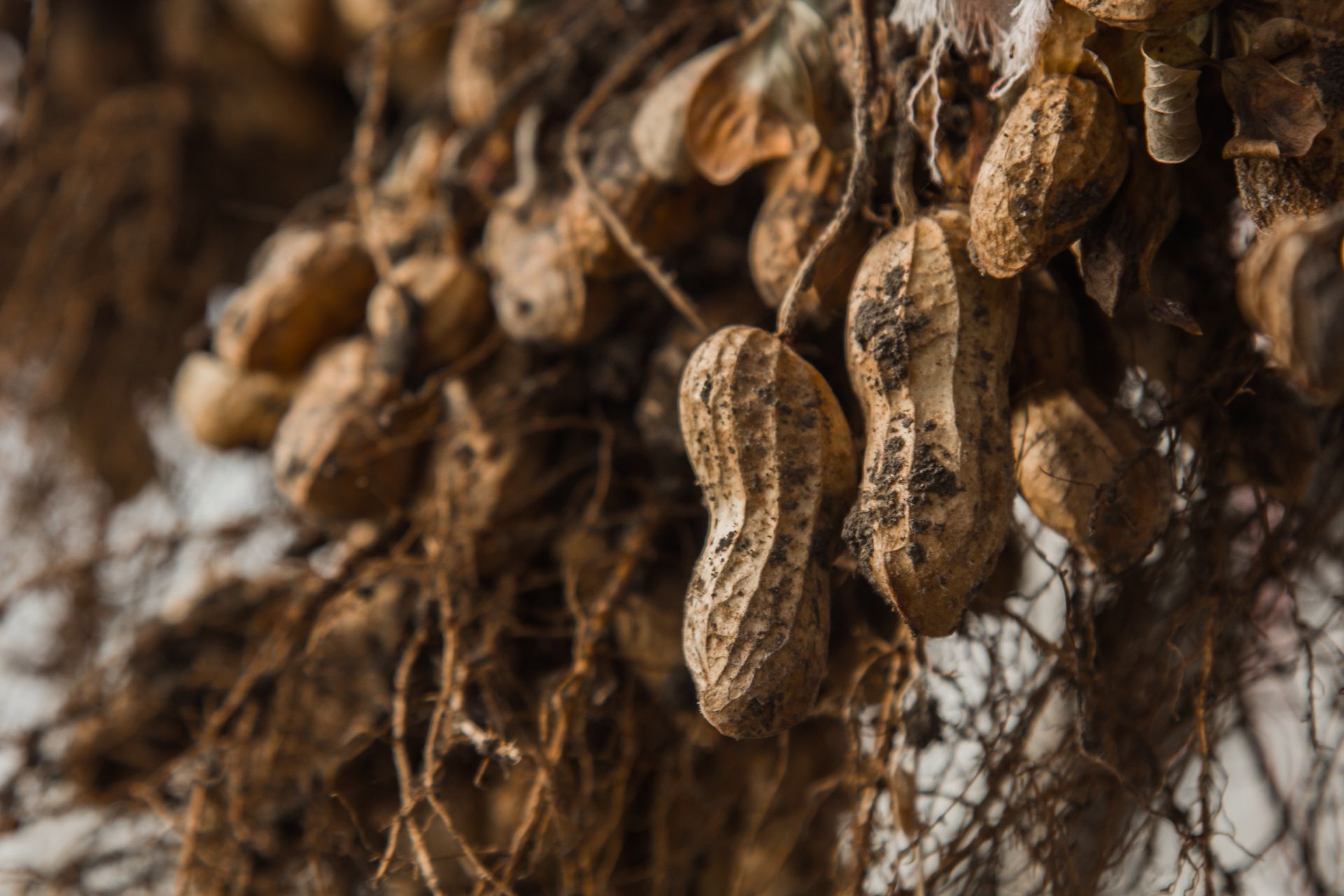


Peanuts are grown throughout the Southeast United States. Those states include NC, GA, SC, VA, TX, FL, AR, MS, OK, NM, LA, and AL.
A common deficiency often seen in peanuts includes Boron and Manganese. This usually occurs on more sandy soils, a popular soil type for peanuts.
Peanuts have several periods of influence. This begins with the early vegetative stage, which moves into the first bloom. During this period, it is crucial to provide the plant with essential nutrients that play an important role in plant growth. Following the first bloom, pegging is the process in which the ”pegs” grow away from the plant as a stem and penetrate the soil, where the seed embryo on the end of the peg begins to form into a peanut. Following pegging, the peanuts then form into a full-size pod which will, in turn, mature into full-size peanuts, which are then dug and harvested. Essential nutrients are needed during each process, and the plants must have what they need to ensure full yield potential.
Typical recommendations for peanuts will follow along with the periods of influence. Foliar applications of NACHURS Finish Line® begin around 30 days after planting recommended. These applications will also continue at roughly 45 and 75 days after planting. This application of Finish Line provides plants with essential macronutrients N-P-K, as well as critical micronutrients that are needed for crucial plant growth functions. Through the applications at 30, 45, and 75 days of Finish Line, both Boron and Manganese are supplied, which ensures that the plant receives the levels needed and should prevent deficiency symptoms through the season. Line also contains fulvic acid, which helps to ensure efficient nutrient absorption on the leaf surface. After this period, NACHURS K-fuel® is recommended to be applied 90 and 110 days after planting. During this later period of pod fill and peanut maturity, potassium is critical in helping to ensure pods fill and the highest yield can be achieved.
For more recommendations or questions, please contact your local NACHURS sales manager.

